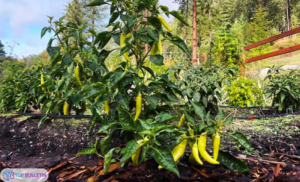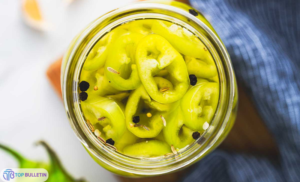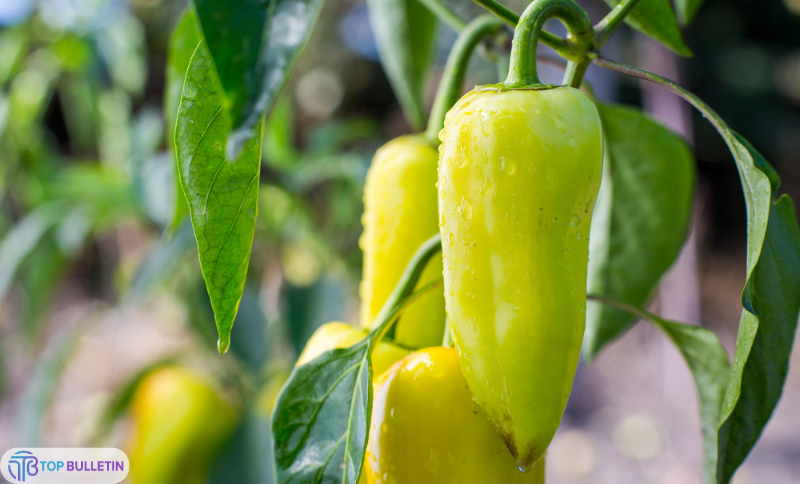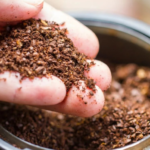Banana pepper, often mistaken for their fiery counterparts like jalapeños, are a mild and versatile variety of chili pepper. With their bright yellow, sometimes red, hue and tangy flavor, they can elevate a variety of dishes, both as a fresh ingredient and in pickled form. Whether you’re growing them in your backyard or purchasing them from the store, banana_peppers offer unique benefits and a great flavor kick.
In this article, we’ll delve into the various aspects of banana_peppers, including their health benefits, how to grow them, delicious recipes, and a comparison with other peppers like pepperoncini. By the end, you’ll be well-versed in how to use banana pepper in your meals and take full advantage of this vibrant vegetable.
What Are Banana Peppers?
 Banana_peppers are long, slender chili peppers that are typically mild and sweet. They belong to the Capsicum annuum species and are part of the same family as bell peppers and jalapeños. While they are often yellow, they can also turn red or green as they ripen. Their distinctive banana-like shape and color give them their name, but their mild, tangy flavor is what sets them apart from hotter varieties.
Banana_peppers are long, slender chili peppers that are typically mild and sweet. They belong to the Capsicum annuum species and are part of the same family as bell peppers and jalapeños. While they are often yellow, they can also turn red or green as they ripen. Their distinctive banana-like shape and color give them their name, but their mild, tangy flavor is what sets them apart from hotter varieties.
These peppers are commonly used in salads, sandwiches, pizza toppings, and even as a garnish. Whether eaten raw, grilled, or pickled banana peppers can add a delightful pop of flavor to almost any dish.
Health Benefits of Banana Peppers
Banana_peppers are not just delicious—they also provide a range of health benefits. Here’s why you should consider adding them to your diet:
1. Rich in Vitamins
Banana_peppers are packed with vitamins, especially vitamin C, which plays a key role in immune function. One serving of banana_peppers can provide over half of the recommended daily intake of this essential nutrient.
2. Supports Digestive Health
Banana_peppers contain capsaicin, the compound responsible for the pepper’s heat. Capsaicin has been shown to aid digestion by stimulating the production of gastric juices and improving overall gut health.
3. Anti-Inflammatory Properties
Capsaicin, found in banana_peppers, also has anti-inflammatory effects. It can help alleviate discomfort associated with inflammatory conditions like arthritis, making it a good addition to your anti-inflammatory diet.
4. Low in Calories
For those watching their calorie intake, banana_peppers are a great option. They are low in calories but high in flavor, making them an excellent choice for adding zest to dishes without increasing calorie consumption.
Banana Pepper Recipes to Try
Banana_peppers are incredibly versatile, and their mild flavor makes them suitable for a variety of dishes. Here are some of the best banana_pepper recipes you can try at home:
1. Stuffed Banana Pepper
Stuffed banana_peppers are a popular dish, and they can be customized with a variety of fillings. Here’s a simple recipe:
Ingredients:
-
6 banana_peppers
-
1 cup of cooked rice
-
1/2 cup of shredded cheese
-
1/4 cup of ground meat (beef, turkey, or sausage)
-
1 tablespoon of olive oil
-
Salt and pepper to taste
Instructions:
-
Preheat the oven to 375°F (190°C).
-
Cut off the tops of the banana_peppers and remove the seeds.
-
In a skillet, cook the ground meat in olive oil until browned. Mix in the rice, cheese, salt, and pepper.
-
Stuff each banana_pepper with the rice and meat mixture.
-
Place the stuffed peppers on a baking sheet and bake for 20 minutes, or until the peppers are tender.
2. Banana Pepper Salad
For a lighter option, you can create a fresh banana pepper salad.
Ingredients:
-
2 banana_peppers (sliced thin)
-
1 cucumber (sliced)
-
1/2 red onion (sliced)
-
2 tablespoons olive oil
-
1 tablespoon vinegar
-
Salt and pepper to taste
Instructions:
-
Toss all the ingredients together in a bowl.
-
Drizzle with olive oil and vinegar, and season with salt and pepper.
-
Let the salad sit for 10 minutes to allow the flavors to meld together.
3. Pickled Banana Pepper
Pickling banana_peppers is one of the most common ways to preserve them. This recipe is simple and can be enjoyed as a tangy topping or side dish.
Ingredients:
-
10 banana_peppers (sliced)
-
1 cup white vinegar
-
1 cup water
-
1 tablespoon salt
-
1 tablespoon sugar
-
1 garlic clove (optional)
Instructions:
-
In a saucepan, combine the vinegar, water, salt, and sugar. Bring to a boil.
-
Pack the sliced banana_peppers into a clean jar.
-
Pour the hot pickling liquid over the peppers, ensuring they are fully submerged.
-
Seal the jar and let it sit in the refrigerator for at least 24 hours before consuming.
Banana Pepper vs Pepperoncini: Key Differences
Banana_peppers and pepperoncini are often confused because of their similar appearance, but they have distinct differences in taste and heat levels. Here’s how they compare:
-
Heat Level: Banana_peppers tend to be milder, usually ranging from 0 to 500 Scoville Heat Units (SHU). Pepperoncini, on the other hand, can have a bit more heat, ranging from 100 to 500 SHU.
-
Flavor: While both peppers are tangy, pepperoncini has a slightly more bitter flavor compared to the sweet banana_pepper.
-
Usage: Banana_peppers are great in salads and sandwiches, while pepperoncini is commonly used in Italian dishes and as a pizza topping.
Growing Banana Pepper: Tips for Success

If you’re interested in growing your own banana_peppers, here’s what you need to know:
1. Planting Banana_Pepper Seeds
Banana_peppers are easy to grow from seeds. Start them indoors about 8–10 weeks before the last expected frost. Plant the seeds about 1/4 inch deep in seed-starting mix and keep them warm. Once the seedlings have grown large enough, transplant them outdoors.
2. Choosing the Right Location
Banana_peppers thrive in sunny locations with well-drained soil. They prefer temperatures between 70°F to 85°F (21°C to 29°C) and should be planted after the last frost date in your region.
3. Watering and Care
Banana_peppers require regular watering, but be careful not to overwater. Ensure the soil is moist but not soggy. Fertilize with a balanced fertilizer every 2–3 weeks for the best results.
Banana Pepper Scoville Rating: How Hot Are They?
The Scoville Heat Unit (SHU) measures the heat level of chili peppers. Banana_peppers are relatively mild, usually ranking between 0 and 500 SHU. This places them much lower on the heat scale compared to more intense peppers like habaneros or even jalapeños, which can reach over 5,000 SHU.
Despite their mild heat, banana_peppers offer a refreshing and tangy flavor that adds a pleasant kick to dishes without overwhelming the palate.
Conclusion
Banana_peppers are a fantastic addition to your culinary repertoire. Whether you grow them at home or purchase them from your local market, these peppers offer a perfect balance of flavor and health benefits. From their versatility in dishes to their mild heat and nutritional benefits, banana_peppers are more than just a garnish—they’re a key ingredient for a variety of delicious meals.
If you’ve never tried banana_peppers before, we encourage you to explore their many uses and health benefits. Whether you’re pickling, stuffing, or using them in fresh recipes, banana_peppers are sure to add a vibrant and flavorful twist to your meals.
FAQs
1. What’s the difference between banana peppers and pepperoncini?
Banana peppers typically taste milder and sweeter than pepperoncini, which has a more bitter flavor. Both peppers are often pickled and used in similar ways.
2. Can banana peppers be eaten raw?
Yes! Banana_peppers are great raw in salads or as a crunchy topping for sandwiches and tacos.
3. How do I store banana peppers?
Store banana_peppers in a cool, dry place if fresh. If pickled, store them in the refrigerator for longer shelf life.
4. Are banana peppers good for you?
Yes! Banana_peppers are rich in vitamin C, low in calories, and contain capsaicin, which has anti-inflammatory and digestive benefits.
5. How do I grow banana peppers?
Plant banana_pepper seeds indoors, and once they’ve sprouted, transplant them outdoors in a sunny location with well-drained soil.






